 |
 |
| Tikal is the premier Mayan archeological site in
Guatemala. Its peak was around 800 B.C.
They were know for tall pyramids, a complex
writing and numeral system and very accurate
astrological studies. |
Here is one of the Stella or carves stone pillars.
They tell stories and record important dates.
They used a base 20 numeral system and had a
complex calendar of religious and regular dates. |
 |
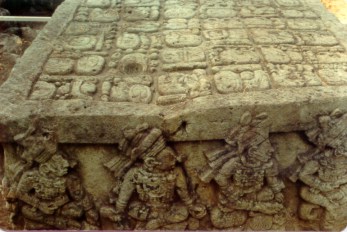 |
| Stone figure |
The Mayan calendar stone. |
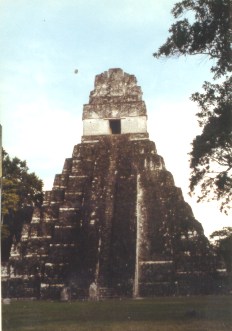 |

These are some of the pyramids at Tikal. They
are very steep compared to other pyramids
around the world. The jungle around these
ruins is also a nature reserve full of monkeys,
many birds and other animals. |
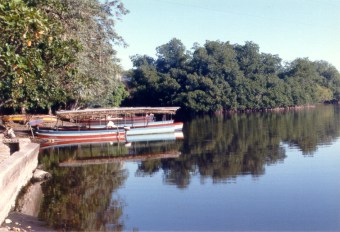 |
 |
| The coastal regions of Guatemala are lush. |
This is on the Rio Dulce. |
 |
Solola is in the western highlands of Guatemala.
The population of Guatemala is split about
50/50 between indigenous people and people of
Spanish mix. The highlands is much more
concentrated indigenous. There are over 20
languages spoken which can be grouped into
about 8 groups. Towns in these areas have
typical dress to that town, and one can tell
where someone is from their dress. The clothes
are made entirely by hand on a back strap loom.
The market in Solola is on Saturdays and is very
colorful with people coming in to buy, sell and
trade almost anything. These weekly markets is
main source of people's food, clothes and other
supplies. Below is a market stand and local
boy. |
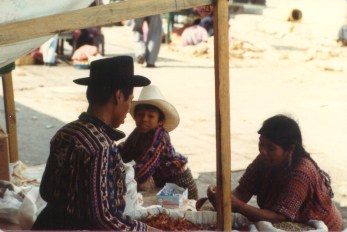 |
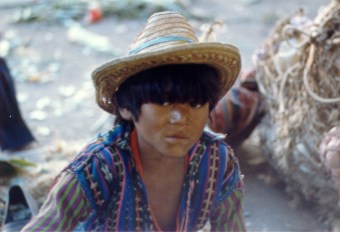 |
 |
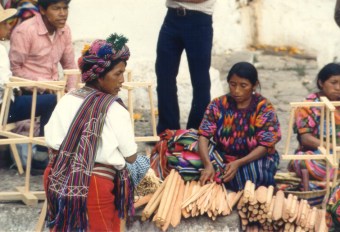 |
| Chichicastenango is in the Quiche state. Their
festival week commemorates their patron saint -
San Tomas. During these ferias there is music,
dances (both regular and ritualized) food and
plenty of fun. |
This market stand is selling the supplies women
need to form a back strap loam for weaving
their clothes. |
 |
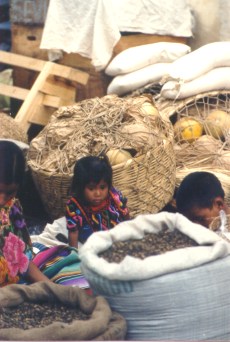 |
| These men are members of the local Cofradia - a
religious society that oversees the festivals and
activities of the church. |
A local girl at the market where basic staples are
sold. |
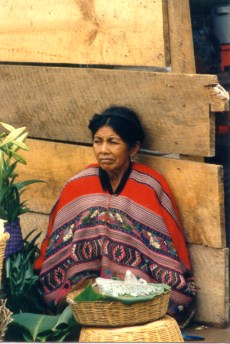 |
 |
| Women from the Chimaltenango state east of
soils and more gentle topography where lots |
Guatemala city. This area is known for rich
vegetables, fruits and flowers are grown. |
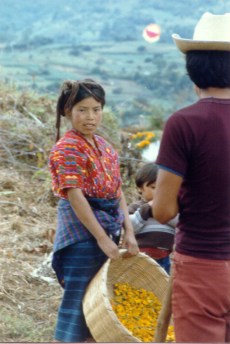 |
 |
| During the day of the dead or all saints day
people clean up and decorate the graves of their
relatives. Marigolds are used a lot following
tradition. |
In Santiago Sac. Impressive kites are flown on
the day of the dead. It is tradition to fly kites on
this day across Guatemala, but the ones in
Santiago are some of the biggest. |
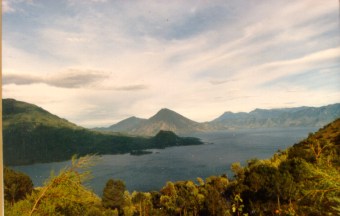 |
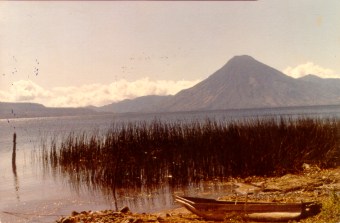 |
| Lake Atitlan is in the highlands of Guatemala. |
It is a very deep lake ringed by mountains and
volcanos. |
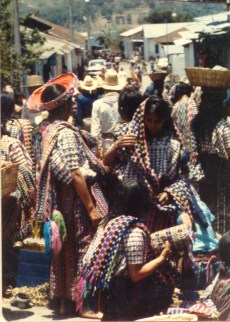 |
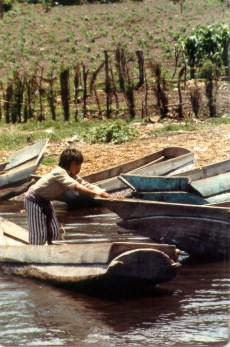 |
| Market scene in Santiago Atitlan, one of the
towns along the shores of Lake Atitlan. |
Some of the boats used to move around the
lake. Many of the towns along the lake have
poor road service and boats are the main
transport. |
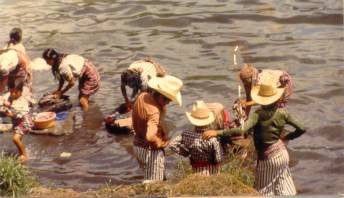 |
 |
| Women washing their clothes in the lake on
rocks. Also a place where the young guys can
try to meet the young women. |
Gathering seaweed from the lake to fertilize
their crop. |

Onions are grown in San Pedro La Laguna on
terraces and sold to communities around Lake
Atitlan. |
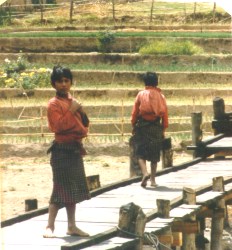 |
 |
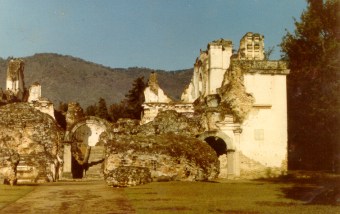 |
| Antigua Guatemala was the capital the Spanish
used for many years until it was moved to the
present Guatemala city. It was moved because
it kept being destroyed by natural disasters. |
Antigua's location at the foot of three volcanos,
one active, lead to many earthquakes and other
natural disasters. There are many ruins of old
churches in this town. |
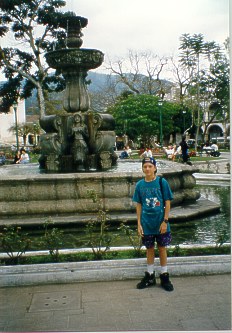 |
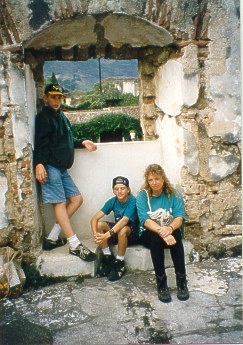 |
| Kyler in front of the fountain in the town square of Antigua. |
Inside one of the church ruins in Antigua. |
 |
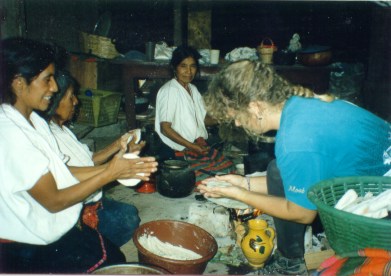 |
| Weaving on a back strap loam. It can be simple
cloth woven or many designs can be woven into
the cloth. These designs are traditional to a
village or can be new ones as well. |
Santa Catarina Ixtahuacan was one of my work
sites during my Peace Corps stay. Here
Jeannine is being taught how to make tortillas.
It is near Lake Atitlan and the people speak
Quiche. I was there 1985-1987. It is at an
altitude of 8000 ft. For more pictures of Santa Catarina click here. |
 |
 |
| Wes dancing with one of the locals. |
Everywhere you go kids play with these wheels. They are in front of a tamascal or Tuj that is used for steam baths. |
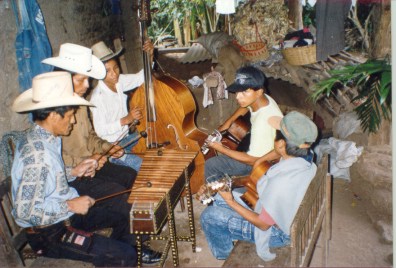
My other Peace Corps site was La Cumbre, San
Pedro Pinula in the State of Jalapa in the
western section of Guatemala. This is still in the
mountains but at an altitude of around 3500 ft.
Corn and beans are the main staple crops and
food. The people there are Pocomans but they
have lost much of their language and traditional
clothes. There is no electricity in this town and
no running water when I first arrived. There is
now a drinking water system. For more pictures of this area see its page at pinula.html.
Kyler is next with
a toad caught by a pond. |
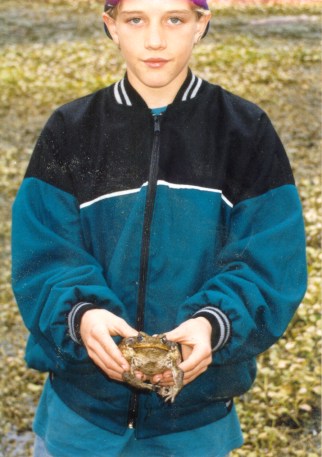 |
 |
 |
| Totonicapan located in the eastern highlands is
known for very ambitious people. On top a lady
is selling candles. A business that is decreasing
as electricity is expanded to new towns. The
livestock market in Toto is very good. The
loam on the right is weaving cloth for lady's
dresses. The patters are formed by tie dyeing
individual threads and then matching them up to
form designs. It is done in very few places and
is very complicated to make the figures and
other designs. |
 |
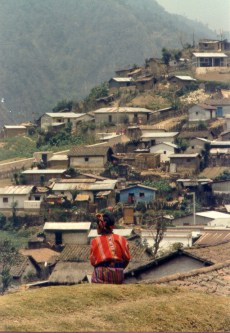 |
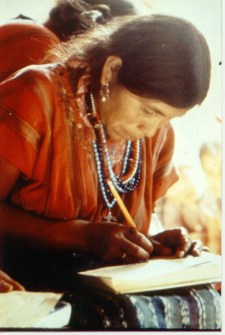 |
| Zunil is a small community east of
Quetzaltenango, Guatemala's second biggest
city. It is known for its vegetable production.
Many small family vegetable plots are irrigated
along the river. |
The local dress is red and pink cloth with line
patterns. |
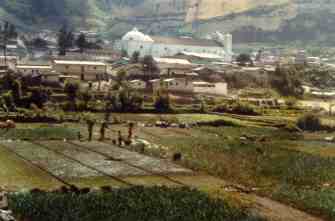 |
 |
 |
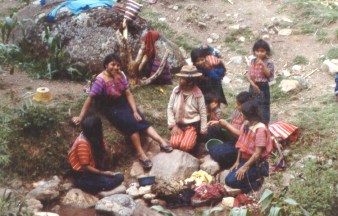 |
| Todas las Santos in the state of Huehuetenango
is a very high area with towns located at over
12,000 ft. Many crops cannot be grown at this
altitude. There is a lot of grazing by sheep. The
people here speak Mam. At the right is a
marimba. It is the typical instrument of
Guatemala and is played at dances and
gatherings all over Guatemala. |
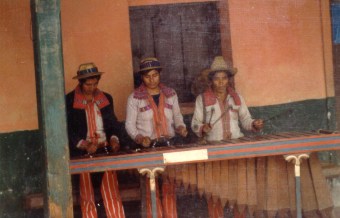 |

Local boys in the traditional dress of this town |
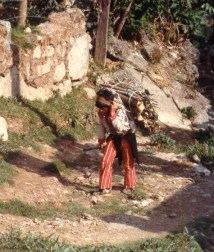
Many heavy things like this firewood is carried
in Guatemala with this head strap method. It
looks difficult, but in reality its very safe for
one's back and you can carry an incredible
amount of weight for long distances using this
method. This is important where there are no
roads. |
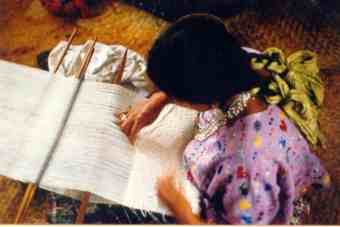 Lady weaving gauze cloth with same color design in Alta Verapaz. |
 Two of the 20 volcanos in Guatemala. |


















































